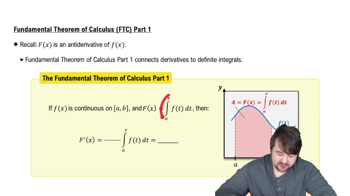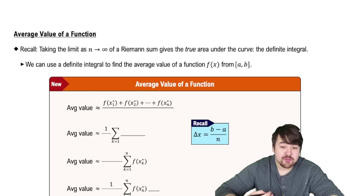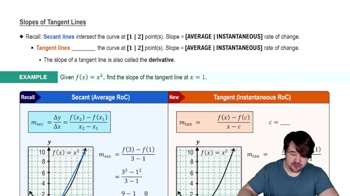Each of Exercises 67–88 gives the first derivative of a continuous function y=f(x). Find y'' and then use Steps 2–4 of the graphing procedure described in this section to sketch the general shape of the graph of f.
82. y' = sin t, for 0 ≤ t ≤ 2π
 Verified step by step guidance
Verified step by step guidance Verified video answer for a similar problem:
Verified video answer for a similar problem:



 11:41m
11:41mMaster Summary of Curve Sketching with a bite sized video explanation from Patrick
Start learning